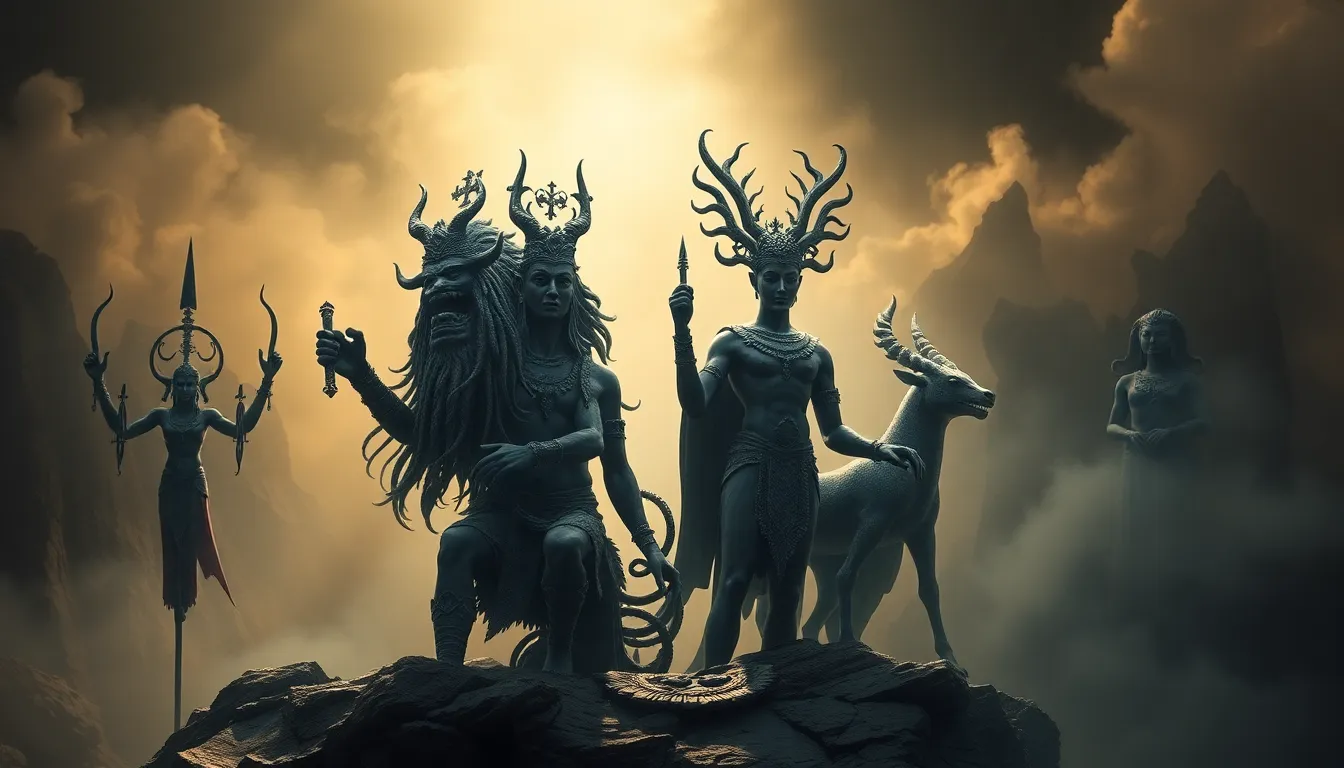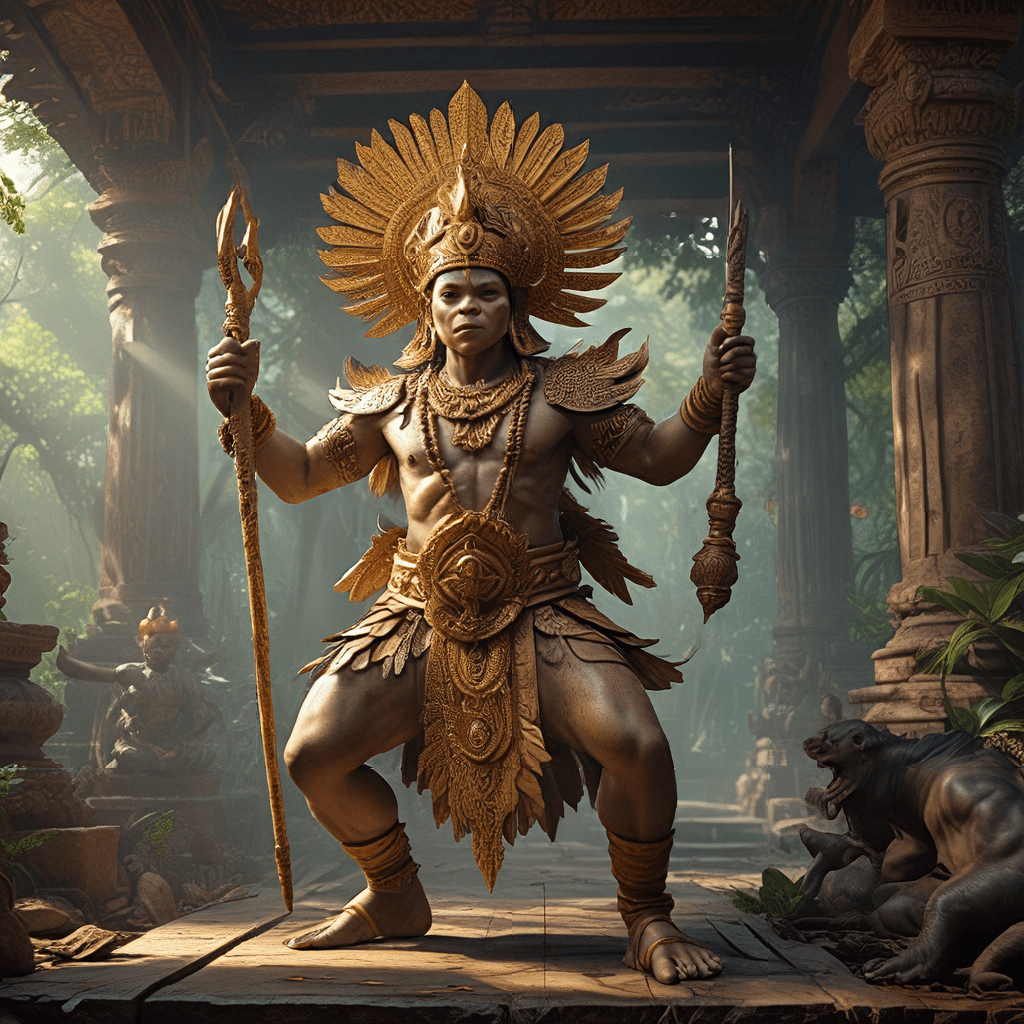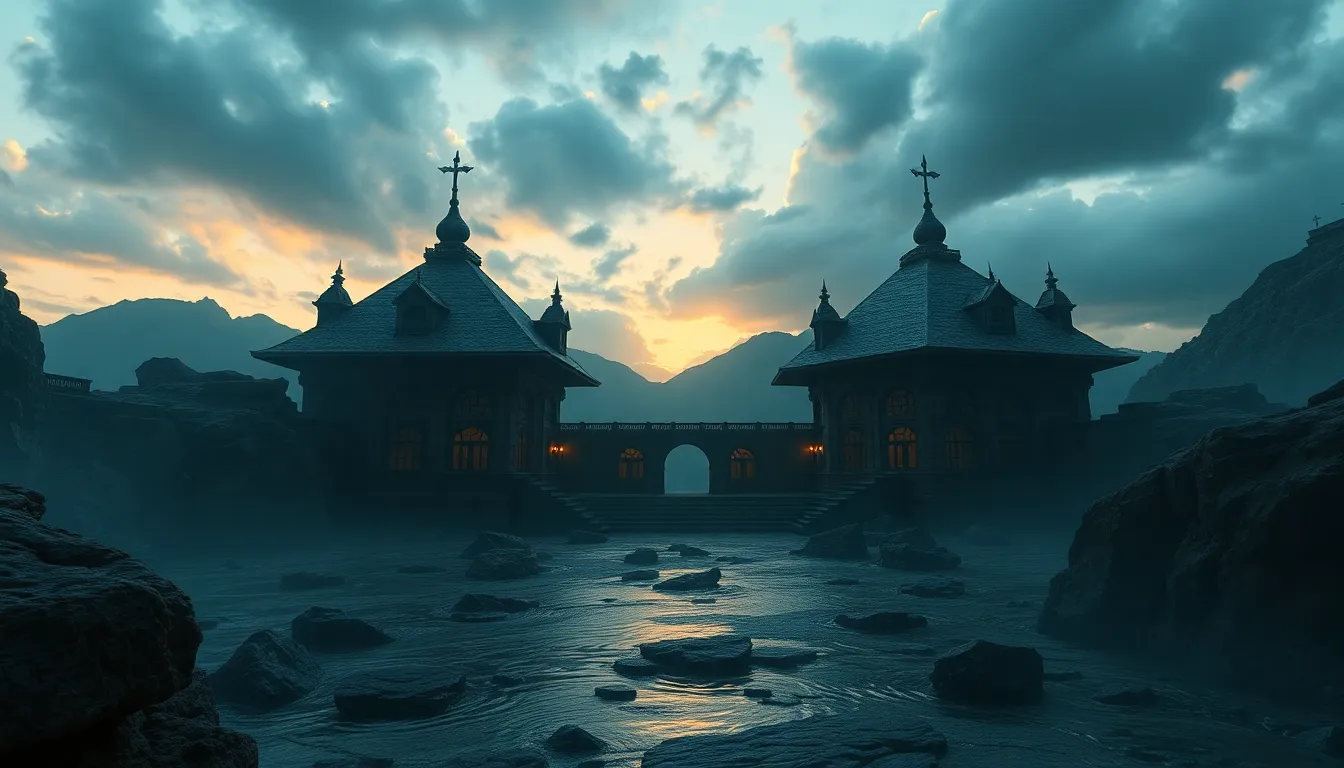Ancient Deities and Their Symbolic Meanings: What Do They Represent?
I. Introduction
Ancient deities are the gods and goddesses worshipped by civilizations throughout history, each embodying various aspects of life, nature, and the cosmos. These figures are more than mere characters in stories; they hold profound significance within their respective cultures. Understanding ancient deities and their symbolism provides insight into the values, beliefs, and practices of the societies that revered them.
The importance of symbolism in ancient religions cannot be overstated. Symbols served as a means to convey complex ideas, emotions, and principles that were integral to the spiritual and social fabric of these cultures. This article aims to explore the symbolic meanings associated with ancient deities across various civilizations, examining their roles, representations, and enduring legacies.
This article will be structured into sections that highlight the role of mythology, specific pantheons like Egyptian, Greek, Roman, Hindu, Mesopotamian, and indigenous deities, as well as the evolution of deity worship and their influence on contemporary culture.
II. The Role of Mythology in Ancient Civilizations
Mythology is the collection of myths that a culture uses to explain the origins of the world, the behavior of its people, and the natural phenomena surrounding them. It serves as a mirror reflecting the values, fears, and aspirations of a society.
- Cultural Significance: Myths provided a framework for understanding life’s complexities, offering explanations for everything from creation to morality.
- Societal Values: Deities often represented the ideals and morals of their cultures, such as justice, love, war, and fertility.
- Daily Life: Myths were intertwined with daily practices, influencing rituals, festivals, and even governmental laws.
III. Egyptian Deities and Their Symbols
Egyptian mythology is rich with gods and goddesses, each possessing unique attributes and symbolism. Key figures include:
- Ra: The sun god, symbolizing light, creation, and kingship.
- Isis: Goddess of magic and motherhood, representing fertility and healing.
- Osiris: God of the afterlife, embodying resurrection and eternal life.
The symbolic meanings associated with these deities were often represented through hieroglyphs and iconography, making them accessible to the populace. For instance, the ankh symbol, representing life, is frequently associated with several Egyptian gods.
IV. Greek and Roman Deities: Parallels and Differences
The pantheon of Greek and Roman gods features many parallels, with each deity reflecting similar aspects across cultures. Major figures include:
- Zeus (Jupiter): King of the gods, symbolizing authority and order.
- Athena (Minerva): Goddess of wisdom and warfare, representing strategy and intellect.
- Hades (Pluto): God of the underworld, embodying death and the afterlife.
Symbolic representations of these gods can be found in various forms of art, from pottery to sculptures, influencing Western culture significantly by embedding these archetypes into literature, philosophy, and even modern storytelling.
V. Hindu Deities and Their Complex Symbolism
The Hindu pantheon is vast and complex, featuring principal gods and goddesses such as:
- Brahma: The creator god, symbolizing creation and knowledge.
- Vishnu: The preserver, often depicted with avatars like Krishna and Rama, representing protection and maintenance of the universe.
- Shiva: The destroyer, embodying transformation and regeneration.
- Devi: The goddess representing the divine feminine, encompassing many forms like Durga and Saraswati.
The concept of avatars is significant in Hinduism, as these incarnations of deities illustrate their ability to interact with the world in various forms. Symbolism plays a crucial role in Hindu rituals, with each gesture and offering carrying deep spiritual meaning.
VI. Mesopotamian Deities: The Foundations of Civilization
Mesopotamian mythology laid the groundwork for many modern religious beliefs. Key deities include:
- Enlil: God of wind and storm, representing power and authority.
- Ishtar: Goddess of love and war, symbolizing duality and conflict.
- Marduk: Chief god, associated with creation, order, and justice.
Their symbolic meanings were deeply intertwined with the development of law, agriculture, and warfare, influencing how societies functioned and governed themselves. The legacy of Mesopotamian mythology can be seen in later cultures, particularly in biblical texts and ancient Near Eastern traditions.
VII. Indigenous Deities and Nature Spirits
Indigenous cultures around the world have their own pantheons, often featuring deities connected to nature and the environment. Examples include:
- Native American Spirits: Many tribes have spirits representing animals, plants, and natural elements.
- African Deities: Often tied to the earth, ancestors, and the community, such as Anansi or Shango.
- Celtic Deities: Featuring figures like Danu and Brigid, embodying fertility, the earth, and craftsmanship.
The symbolism tied to these deities often reflects a deep respect for nature and the environment. Oral traditions play a vital role in preserving these beliefs, passing down stories and teachings through generations.
VIII. The Evolution of Deity Worship and Symbolism
Over time, perceptions of deities have evolved significantly. Key changes include:
- Historical Changes: The rise and fall of empires led to shifts in worship and deity significance.
- Transition from Polytheism to Monotheism: Many cultures transitioned to monotheistic beliefs, reshaping their understanding of divinity.
- Modern Interpretations: Ancient deities are often reinterpreted in contemporary spirituality and popular culture.
IX. The Influence of Ancient Deities on Contemporary Culture
The representation of ancient deities continues to thrive in modern literature, art, and media. Their stories inspire countless works, from novels to films, illustrating the enduring power of these symbols. They serve as archetypes in character development and plotlines, reflecting universal human experiences and emotions.
In conclusion, ancient deities and their symbolic meanings provide a rich tapestry of cultural heritage, reflecting the values and beliefs of civilizations long past. Their influence persists, reminding us of the profound connection between humanity, nature, and the cosmos.



